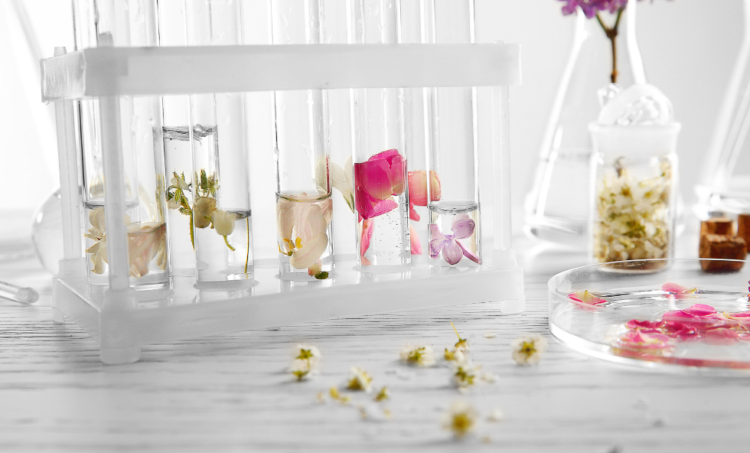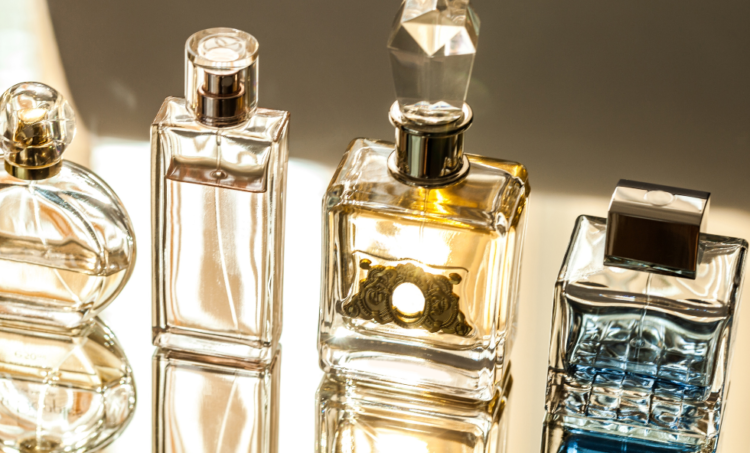Ah, perfume, that enigmatic elixir with the supernatural ability to captivate, seduce, and even defy the laws of nature. But before we go on this aromatic adventure, allow us to amuse you with a hearty chuckle at the expense of those confounding French terms: eau de cologne, eau de toilette, eau de parfum, and extrait de parfum. These words unravel the concentration of fragrant oils concealed within your bottle, but, our dear reader, we assure you, it’s all awoven of fragrant enigma.
The Great Concentration Trick
Perfume concentrations, akin to the assurances of a politician on the campaign trail, make bold claims that, alas, hold little water. You may have encountered the seemingly concrete statistics, such as cologne comprising a mere 2-3% oil and extrait de parfum boasting a staggering 20-25% oil content, seemingly requiring a surgeon’s precision for removal. Sounds persuasive, doesn’t it?
However, prepare for a fragrant revelation – perfume concentrations are largely an artful marketing technique. The proportion of oil within these mixtutre is nothing, but a smokescreen, what truly matters is the harmonious interplay of ingredients. So, let’s understand this aromatic bluff and debunk the concentration myths.
Eau de Cologne
Eau de cologne, the Champagne of the perfume realm, effervescent, vivacious, and effortlessly charming. Bursting with lively citrus essences, it’s equivalent to that first sip of bubbly to kickstart your day. Some may assert that colognes are not long-lasting, vanishing like a politician’s lofty promises. Yet, contemporary interpretations stand in defiance of such notions.
These fragrances with an artful blend of ingredients that prolong their vivacity. Citrus mingles with musks, woods, and ambers, resulting in a wardrobe of colognes, from ethereal to opulent. Cologne Impériale possesses a longevity that outlasts your morning coffee, while Cologne du Parfumeur works well into party time.
Eau de Toilette vs. Eau de Parfum

When a fragrance line presents both Eau de Toilette and Eau de Parfum iterations of the same scent, don’t be swayed by the heavy titles. Eau de Toilette typically flaunts fruity, citrusy, and verdant top notes, akin to a comedian’s opening act, eliciting light-hearted chuckles.
Conversely, Eau de Parfum reserves its fragrance for later, emphasising floral and weightier base notes, much like a comedian saving their punchlines for the grand finale. The extravagant claims that Eau de Parfum possesses superior longevity are as precarious. The true endurance of a fragrance is unveiled only through a side-by-side comparison.
Take some products, for instance. The Eau de Toilette and Eau de Parfum variants may appear as rival comedians vying for your affection. Both fragrances grace your skin for approximately 6-9 hours, yet one delivers a playful mandarin twist, while the other indulges in the embrace of ripe peaches and shavings of aromatic cedarwood for an entirely different punchline.
Extrait de Parfum
Now, allow us to enterain you with the tale of the perfume world’s master – extrait de parfum, also known as the parfum. This creation harks back to an era when fragrances were cherished as potent elixirs. Picture it as the aromatic counterpart to a finely aged wine.
Rich in oils compared to alcohol, it brings an intimately luxurious experience. For anyone to detect Jean Patou 1000 parfum gracing your neck, they would need to lean in, almost as if poised for a kiss. It’s also the costliest form of perfume, a consequence of not only the elevated concentration of fragrant oils but also the opulent packaging.
The Significance of Perfume Concentrations

Now, let us address the punchline regarding the significance of perfume concentrations. Much like the hollow pledges of politicians, it transpires that they possess limited substance. The proportion of oil, we discover, plays a lesser role than the sum of the fragrance’s constituent parts.
So, whether you opt for a spritz of cologne, extrait de parfum, or any adventure in between, remember this essential truth – perfume concentrations are akin to the empty rhetoric o; they sound impressive but do not substantiate their claims.
Making Scents of It All
In light of these revelations, how can you navigate the perfumed complexity with confidence? The solution is as audacious as a stand-up comedian breaking convention – treat eau de cologne, eau de toilette, eau de parfum, and extrait de parfum as distinct fragrances.
Engage in experimentation by comparing different concentrations of the same perfume, embarking on a fragrant rollercoaster that defies convention. Wear cologne during twilight hours and indulge in extrait de parfum as a morning delight. Perfume, much like the art of comedy, thrives on the freedom to craft your own rules, and, dare I say, to relish in breaking them.
Conclusion
Perfume concentrations may be the pièce de résistance of the fragrance world. They make big promises yet ultimately leave us with a mere whiff of confusion. However, armed with this newfound wisdom, you can venture forth into the fragrant aisle with confidence.
Whether you choose to go for cologne, immerse yourself in extrait de parfum, or chart a fragrant course in between the two, remember that fragrance is a personal journey, one that brims with laughter and delightful surprises. The beauty of this aromatic adventure lies in your ability to assume the roles of both the comedian and the audience, all while critiquing the performance. So, spray on, our fragrant friend, and let the world be your stage!

